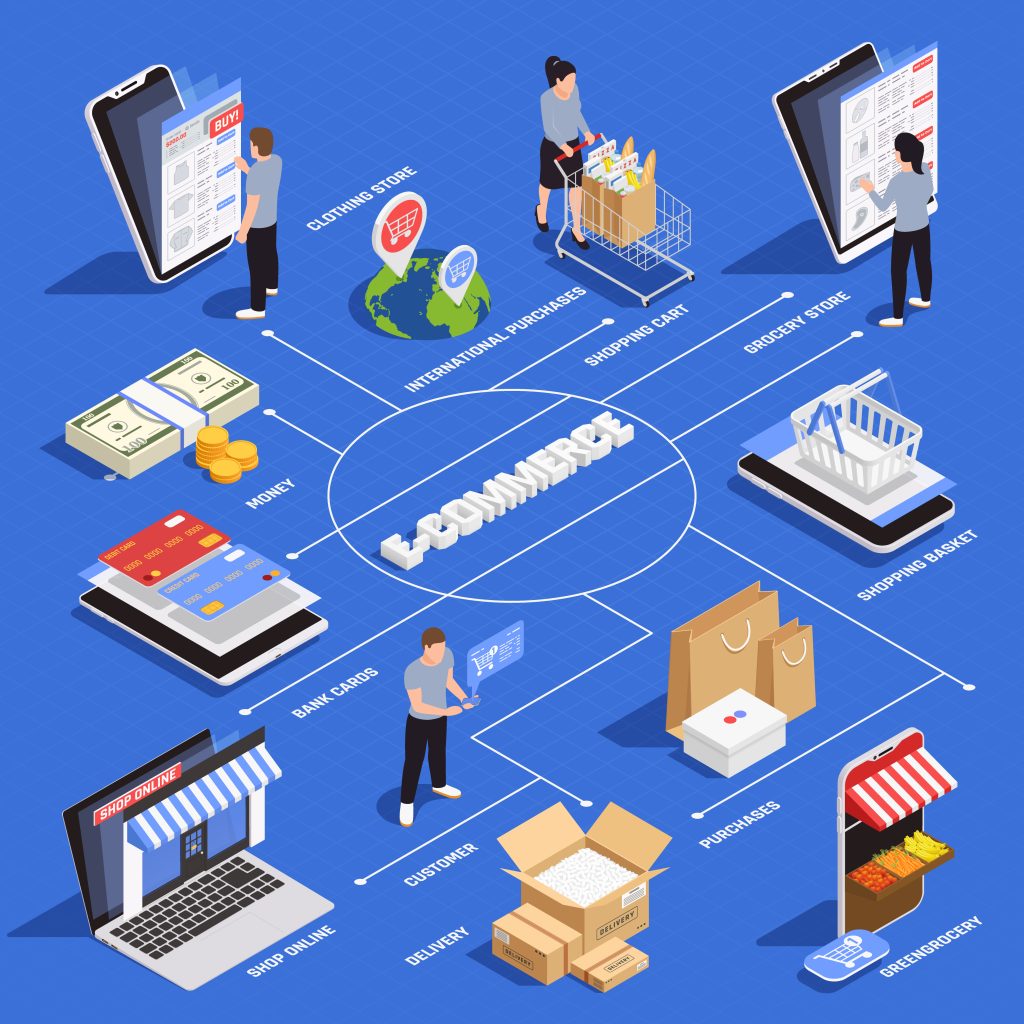The Impact of Digital Transformation on Supply Chain Efficiency in E-Commerce
Well, well, well – who do we have here? You want to do some e-commerce? Fine. If you’re going to do business online, you need to be quick and clear. Customers value fast delivery, ease of use, and fair pricing. Companies are using digital transformation to change supply chains to meet these high standards.
It’s not enough to just have new technology, we also need smart solutions that save money and simply make it even more easier. Electronic tools are radically transforming how e-commerce companies deliver goods to your door.
With each click, the digital revolution improves supply chains. Shall we investigate?

E-commerce’s supply chain: problems and digital fixes
Online shopping isn’t always easy, like a walk in the park. One misstep and the whole system can come crashing down. Online stores have different problems to deal with than traditional stores. It’s not just about getting products from A to B; it’s about doing it faster, cheaper, and with a smile.
To understand it better, let’s dismantle it:
- Customers who make purchases online today expect their packages to get to them very quickly. Two days to ship? That was so last year. Now, delivery in an hour or even the same day is very important. To meet these needs, e-commerce supply chains are under a lot of stress.
- Logistics have gotten trickier as globalization has grown. Goods may come from more than one country, be shipped across continents, and be stored in more than one warehouse before they reach the customer. Keeping track of everything can be difficult.
- E-commerce is highly competitive in nature, and people are always looking for the best deals. It’s completely normal; we all do it. But this makes businesses feel like they need to cut costs and improve their supply chains right away.
It’s not sufficient to simply keep up with the other e-commerce businesses that are currently operating; you must consistently stay one step ahead of the competition.
Battery intelligence: your AI-powered energy guru
As a result of new ideas, e-commerce supply chains are getting better at using resources and can last longer. AI-powered battery intelligence platform is changing how warehouses work by making the best use of energy and cutting costs. It’s kind of like having your own energy expert in the warehouse, constantly checking and analyzing battery performance to make sure it works at its best. But it’s more than just leaving the lights on.
For example, Elysia battery intelligence looks deeply into how your warehouse uses energy, finding places where you can save it and telling you when maintenance is due. This approach is pretty proactive, not just in cutting costs but in making sure your operations are running smoothly by reducing downtime.
By analyzing usage data, identifying overutilization or underutilization, and suggesting charging strategy or equipment changes. Predictive maintenance controls unexpected failures, saving money on downtime and replacements. Elysia monitors temperature to optimize storage and usage, extending battery life.
Going digital allows you to use fewer batteries and reduce your environmental impact. This is one way digital technologies are improving e-commerce supply chains.

Your supply chain’s virtual powerhouse – cloud computing
Consider cloud computing providers your all-in-one command center for e-commerce supply chain transformation. They provide the digital infrastructure and power to optimize operations, improve visibility, and improve customer experience. It is like moving from a small office to a large, modern headquarters with everything you need to run your business.
But what exactly does cloud computing do for your supply chain? Think of cloud computing as your digital toolkit, packed with power and information. It gives you instant access to what matters most, no matter where you are. See inventory levels in real time, track shipments closely, and manage orders with ease. Sounds perfect. Right? This big picture view helps you spot problems before they become big ones, guess what your customers will want, and make decisions based on data that improve your whole supply chain.
The best part? Cloud computing grows with you. As your business expands, your cloud resources do too, without needing to buy expensive new equipment. Maintaining a competitive advantage requires a high level of adaptability.
Finding cloud computing providers that are suitable for your company is, however, of the utmost importance. Pay attention to aspects such as the cost, the level of security, the amount of data storage capacity, and the particular features and functionalities that correspond with your goals.

Tool and equipment management apps to simplify life
A tool and equipment management app is essential for e-commerce supply chain efficiency. With the help of these digital platforms, businesses are able to successfully monitor, maintain, and maximize the usage of their tools and equipment, which includes everything from delivery vehicles to warehouse forklifts.
These apps let you:
- Watch out for the competition: schedule regular maintenance to avoid surprises.
- Work smarter, not harder, to maximize your resources.
- Look for potential issues before they become costly accidents or delays.
These apps boost productivity and safety. They inspect, maintain, and use equipment properly. Fewer accidents and issues will improve operations and profitability.
Turning your digital dreams into reality
Roll up your sleeves and get to work with your digital toolbox. Like house renovations, a successful implementation requires a plan. Plan each step, set realistic deadlines, and assign clear responsibilities before diving in.
It’s important to keep in mind that the quality of technology is directly proportional to the quality of the people who use it.
Consequently, it’s of the utmost importance to make investments in the training of your employees and to cultivate a culture of digital adoption. Take measures to ensure that everyone is aware of the advantages of the new tools and is aware of how to make effective use of them. Create an atmosphere that encourages collaboration, where feedback is eagerly received, and where continuous improvement is a common practice.
It is a journey of continuous impatience, but it’s worthwhile.
